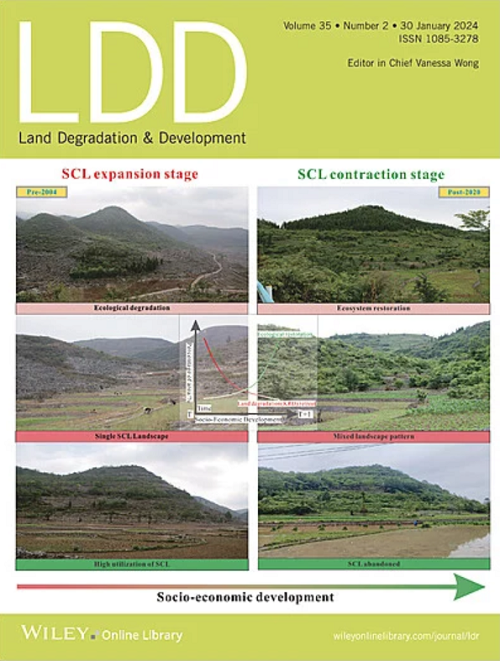Dual Effects of PVC Microplastics on Cd Mobility in Red Soil: Enhanced Aqueous Concentration Versus Reduced Soil Bioavailability
IF 3.7
2区 农林科学
Q2 ENVIRONMENTAL SCIENCES
引用次数: 0
Abstract
Microplastic and cadmium (Cd) co‐contamination affects Cd fate in soil‐water systems. However, it remains unclear whether soil type regulates the microplastic‐induced changes in Cd bioavailability. Moreover, the effects of microplastics on Cd leaching behavior are also poorly understood. To fill the above gaps, this study employed column leaching experiments to systematically investigate the impact of polyvinyl chloride (PVC) microplastics on Cd dynamics in two typical soils: cinnamon soil and red soil. The results showed PVC disrupted the Cd solid–liquid equilibrium in a soil‐type‐dependent manner. PVC had a stronger effect on Cd fate in red soil than in cinnamon soil, increasing Cd in aqueous phases (porewater and leachate) while decreasing Cd bioavailability in solid phases, including HNO聚氯乙烯微塑料对红壤中镉迁移的双重影响:提高水浓度与降低土壤生物有效性
微塑料和镉(Cd)共污染影响Cd在土壤-水系统中的归宿。然而,目前尚不清楚土壤类型是否调节微塑料诱导的Cd生物有效性变化。此外,微塑料对镉浸出行为的影响也知之甚少。为了填补上述空白,本研究采用柱淋试验系统研究了聚氯乙烯(PVC)微塑料对肉桂土和红壤两种典型土壤中镉动态的影响。结果表明,聚氯乙烯以土壤类型依赖的方式破坏了镉的固液平衡。在红壤中,PVC对Cd的影响比在褐土中更强,增加了水相(孔隙水和渗滤液)中的Cd,而降低了固相(包括HNO3可萃取组分、交换组分和可还原组分)中的Cd的生物利用度。在高污染红壤中,PVC使孔隙水中Cd增加了2.35倍,浸出Cd增加了2倍。同时,PVC诱导pH降低(0.14单位),Eh升高(65 mV),调节磷酸酶活性和有效磷水平,从而影响Cd迁移率。这些变化在粘土矿物丰富的土壤中加剧了镉迁移的风险,而在低有机质、大粒度的肉桂土中效果较弱。这些发现强调了将水相镉动力学纳入污染风险评估的必要性,同时认识到微塑料是农田污染控制的关键因素,以支持差异化土壤管理和源头减少策略。
本文章由计算机程序翻译,如有差异,请以英文原文为准。
求助全文
约1分钟内获得全文
求助全文
来源期刊

Land Degradation & Development
农林科学-环境科学
CiteScore
7.70
自引率
8.50%
发文量
379
审稿时长
5.5 months
期刊介绍:
Land Degradation & Development is an international journal which seeks to promote rational study of the recognition, monitoring, control and rehabilitation of degradation in terrestrial environments. The journal focuses on:
- what land degradation is;
- what causes land degradation;
- the impacts of land degradation
- the scale of land degradation;
- the history, current status or future trends of land degradation;
- avoidance, mitigation and control of land degradation;
- remedial actions to rehabilitate or restore degraded land;
- sustainable land management.
 求助内容:
求助内容: 应助结果提醒方式:
应助结果提醒方式:


